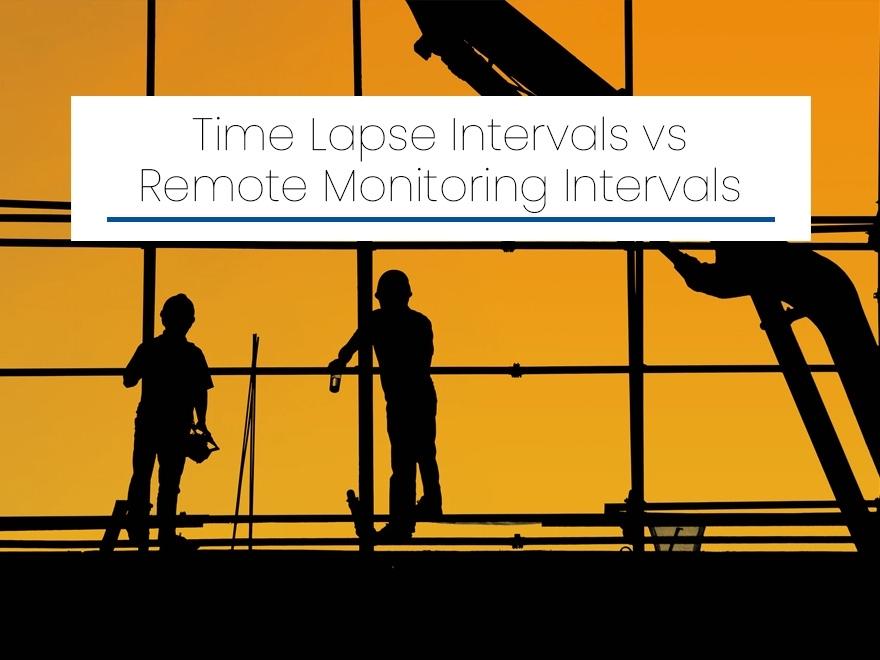One of the most effective ways to attract new clients in the construction industry is by creating a visually appealing and comprehensive time lapse video of your site. The other reason to make a time lapse video, of course, is for up-to-the-minute site-monitoring. With the scale of construction projects growing, it can be difficult for one project manager to stay on top of multiple sites. Remote monitoring enables a manager to track all site progress and activity remotely.
For construction time lapse, the most important factors are good overall lighting, steady colors, and a discernible change in activity from one photo to the next. You also have to choose the right interval.
What Is An Interval?
An interval is the gap between each shot the camera captures—it’s what creates the ultimate time lapse effect. The longer your interval, the faster your footage will appear. For example, if you record time lapse photography at an interval of 2 seconds, it’s comparable to shooting at 0.5 fps.
How To Use The Correct Time Lapse Interval For Your Project
To apply the correct interval, you have to know the length that your final project will be and for what period of time you’ll be shooting. You also have to know your ultimate goal: do you want to capture a start-to-finish video of your build as a promotional tool? Or are you monitoring remotely for surveillance purposes? Atime lapse calculator can help determine this. And you’ll also need consider a number of variables, which are covered in this article.

What Are You Capturing?
The considerations will be different for both scenarios. For time lapse, you may want to capture more shots to be safe. However, for remote monitoring, you will want to capture more shots overall. That’s because in time lapse, you’re looking to capture project progress—i.e. the work, while during a remote monitoring situation you’re capturing the workers in order to gauge safety and productivity. If this is the first promotional time lapse video you’ve shot and you’re unsure which interval to use, it can be wise to choose a faster interval over a slower one. While you can always speed up extra frames later, it’s impossible to capture frames missing due to slow intervals. This becomes more problematic once unusable shots have been discarded.
How Long Do You Want Your Time Lapse Compilation To Be?
How many pictures will be required to showcase your build properly? Too few, and you won’t have enough frames to show the chronology of the project successfully. On the other hand, too many photos, and you’ll be unnecessarily sifting through extra frames later or your video will be too long and slow-moving/uninteresting if there isn’t much action taking place in that period of time. Additionally, too long an interval can create a “jumping” effect, where an object that’s present in one shot vanishes in the next. That said, capturing the tightest interval possible is generally recommended, as it provides the greatest flexibility for the final product. A slower changing scene, like a construction site, can afford a longer interval.
Promotional Videos
Promotional videos are by nature, longer, because they’re showing a build from start to finish and unfold over anywhere from 6 months to a couple of years. Longer construction projects lasting a year or more can afford a slower interval to show the structure gradually changing over time. It’s also essential to mount your cameras in an area that will remain clear throughout the year. With promotional videos, you’ll also want to consider how you’d like the final product to flow before choosing an interval.

Remote Monitoring
On the other hand, remote surveillance is a day-to-day documentation of site operations and serves as a way to record construction status. It can be more difficult to apply a standard interval to this instance because different sites have different safety, productivity and security concerns. A site may opt to capture more images of a site in an area with a lot of foot traffic. In cases like these, a manager might be more interested in the intervalsbetween shots than in the final length to ensure they’re capturing the right kind of footage. A general rule for intervals for “business as usual” documenting— once other factors have been considered— is between 10 and 30 minutes.A time lapse data calculator can help with this process.
Multiple Intervals
Depending on the nature of the activity, you can also use multiple intervals. This is especially true in long-term projects like construction, which have periods of low and high activity. A concrete pour, or a crane lifting a beam, for example, are faster-paced activities; therefore, an interval of 60 seconds to five minutes might glean the best result. A slower action, like excavation, might be better captured with an interval of about half an hour.
Another concept is to capture more images during the construction for Remote Monitoring, then use ourCloudX platform to remove the extra images before producing the Time Lapse video.
Documenting a construction build from start to finish is a giant undertaking and a huge responsibility. Setting the right interval is one of the most important decisions you’ll make, so it’s well worth taking the necessary time and effort to get it right. Equally important is having theright equipmentfor the job.




